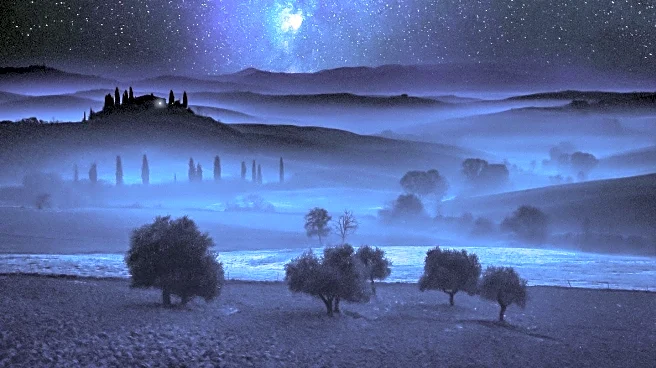What's Happening?
The Perseid meteor shower, renowned for its stunning celestial display, is set to peak late Tuesday night into Wednesday morning. Known for producing bright and colorful streaks of light, the Perseids can deliver up to 100 meteors per hour at their peak. Originating from the debris of Comet Swift-Tuttle, the shower is visible across the Northern Hemisphere, with meteors radiating from the Constellation Perseus. This year's peak coincides with a full moon, which may obscure some of the dimmer meteors but will not diminish the brilliance of the brightest fireballs.
Why It's Important?
The Perseid meteor shower is a significant astronomical event that draws attention from stargazers and scientists alike. It offers a unique opportunity for public engagement with astronomy, fostering interest in space science and exploration. The event also highlights the importance of preserving dark skies, as light pollution can hinder the viewing experience. The Perseids serve as a reminder of the dynamic nature of our solar system and the ongoing interactions between celestial bodies. For communities and tourism industries, the meteor shower can boost local economies through increased visitation to optimal viewing locations.
What's Next?
As the Perseid meteor shower continues, viewers are advised to find locations away from city lights and allow their eyes to adjust to the darkness for optimal viewing. The shower will remain visible through late August, providing additional opportunities for observation. Meteorologists and astronomers will monitor weather conditions and potential obstacles such as wildfire smoke that could affect visibility. The event may inspire educational programs and initiatives aimed at increasing public awareness of astronomical phenomena.















